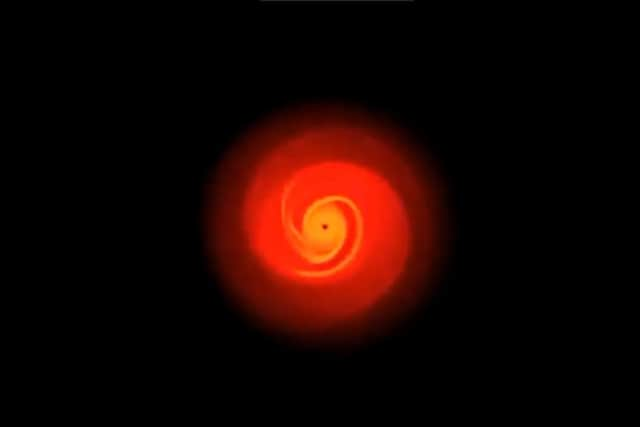UCLan astronomers' out of this world 'fast and furious' Red Dwarf discovery
and live on Freeview channel 276
New research by academics at the University of Central Dr Anthony Mercer and Dr Dimitris Stamatellos’ challenges our understanding of planet formation.
Red dwarfs, the most common type of stars in our Galaxy, are small stars, 10 to 50 per cent the size of our Sun. Despite their small mass, they are found to host giant planets up to 10 times bigger than Jupiter, the largest planet in our Solar System.
However, how they form is a mystery.


Advertisement
Hide AdAdvertisement
Hide AdGiant planets around stars, like our Sun, are believed to have formed by the gradual build-up of dust particles to progressively bigger bodies. However, red dwarfs are tiny compared to the Sun, and don't seem to have enough material around them to form such big planets.
The research team used the UK Distributed Research using Advanced Computing (DiRAC) supercomputing facility to simulate the evolution of the rotating structures around red dwarf stars.
They also discovered if these young discs are big enough they can break up into pieces, forming gas giant planets, leading to the theory that the formation of giant planets happens within a few thousand years, a timescale which is extremely fast in astrophysical terms.
Dr Mercer, who led the research, said: "The fact that planets may be able to form on such short timescale around tiny stars is incredibly exciting.
Advertisement
Hide AdAdvertisement
Hide Ad"Our work shows that planet formation is particularly robust: other worlds can form even around small stars in a variety of ways, and therefore planets may be more diverse than we previously thought."
Dr Stamatellos, astrophysicist in UCLan’s Jeremiah Horrocks Institute, added: "This was the first time that we were able not only to see planets forming in computer simulations but also to determine their initial properties with great detail. It was fascinating to find that these planets are of the ‘fast and furious’ kind - they form quickly and they are unexpectedly hot."
Future observations of planets around very young red dwarf stars will test the predictions of this new theory.
The research was funded by a PhD studentship from the Science and Technologies Facilities Council (STFC) and their paper has now been published in the Astronomy and Astrophysics Journal,
To read the research paper visit https://www.aanda.org/10.1051/0004-6361/201936954